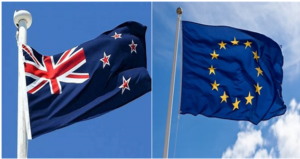
A Review of the Polish Draft Law to Implement the Pillar Two GloBE Rules
On April 25, 2024, the Polish Ministry of Finance issued a draft law to implement the EU Minimum Tax Directive into domestic law. Read our review of the draft law.
Article 2.10 of the February 2023 OECD Administrative Guidance provides more information on the treatment of the US Global Intangible Low-Taxed Income (GILTI) regime.
This is to be treated as a blended CFC Regime for GloBE purposes. Under the GloBE Rules CFC taxes are allocated to the foreign CFC (subject to the push down restriction). The GloBE Commentary doesn’t go into detail on the allocation and just provides that the CFC tax should be allocated to each CFC based on the owner’s share of the underlying income.
However, determining the allocation can be tricky when there is a blended CFC regime.
The December 2023 OECD Administrative Guidance provides additional information on the application of the Blended CFC rules, including:
– where an MNE Group calculates multiple GloBE Jurisdictional ETRs for different types of Entities located in the same jurisdiction (eg a separate GloBE ETR for investment entities or JVs),
– where an MNE Group is not required to calculate an ETR as they claim the Transitional CbCR Safe Harbour or the QDMTT Safe Harbour, or if the De Minimis exclusion applies
– where a Constituent Entity is subject to a Blended CFC Tax Regime on the income of non-GloBE Entities.
If you haven’t got a subscription you can join up below.

On April 25, 2024, the Polish Ministry of Finance issued a draft law to implement the EU Minimum Tax Directive into domestic law. Read our review of the draft law.

The tax data mapping assessment is the cornerstone for MNEs looking to implement an effective approach to manage Pillar Two. All systems changes flow from this.

Analysis of the domestic implementation of the Pillar Two Global Minimum Tax rules in Barbados for accounting periods beginning on or after January 1, 2024. Updated for the draft legislation being considered by the Barbadian Parliament.

The Pillar Two rules include specific rules for Joint Ventures (JVs) that would otherwise not be within the scope of Pillar Two due to not being consolidated in the financial accounts of the MNE group. However, of more interest is how the amount of top-tax tax (and by implication the amount not collected) varies depending on the JV group structure. Read more in this article.

MNE groups should pay careful attention to any group financing companies in light of the Pillar Two Rules. In this analysis we look at the impact of Pillar Two under for both general GloBE and QDMTT purposes.

On March 22, 2024, the Decree of the Ministry of Economy and Finance No. 1048, to amend the Enforcement Regulations of the International Tax Adjustment Act entered into force.

On March 22, 2024, the Enforcement Regulations to the International Tax Adjustment Act were amended. This includes attachments for the GIR (in English and Korean), the GloBE Tax Return and the Notification Form for a Foreign CE to File the GIR.

Whilst the OECD Model Rules require the application of the IIR to Low-Taxed Constituent Entities outside the jurisdiction, the Commentary permits the application of the IIR domestically (a ‘DIIR’). Both New Zealand and the EU apply a DIIR.

Analysis of the Pillar Two GloBE rules in Greece – updated for Law 5100/2024 of April 5, 2024 implementing the EU Minimum tax Directive.
| Cookie | Duration | Description |
|---|---|---|
| cookielawinfo-checkbox-analytics | 11 months | This cookie is set by GDPR Cookie Consent plugin. The cookie is used to store the user consent for the cookies in the category "Analytics". |
| cookielawinfo-checkbox-functional | 11 months | The cookie is set by GDPR cookie consent to record the user consent for the cookies in the category "Functional". |
| cookielawinfo-checkbox-necessary | 11 months | This cookie is set by GDPR Cookie Consent plugin. The cookies is used to store the user consent for the cookies in the category "Necessary". |
| cookielawinfo-checkbox-others | 11 months | This cookie is set by GDPR Cookie Consent plugin. The cookie is used to store the user consent for the cookies in the category "Other. |
| cookielawinfo-checkbox-performance | 11 months | This cookie is set by GDPR Cookie Consent plugin. The cookie is used to store the user consent for the cookies in the category "Performance". |
| viewed_cookie_policy | 11 months | The cookie is set by the GDPR Cookie Consent plugin and is used to store whether or not user has consented to the use of cookies. It does not store any personal data. |